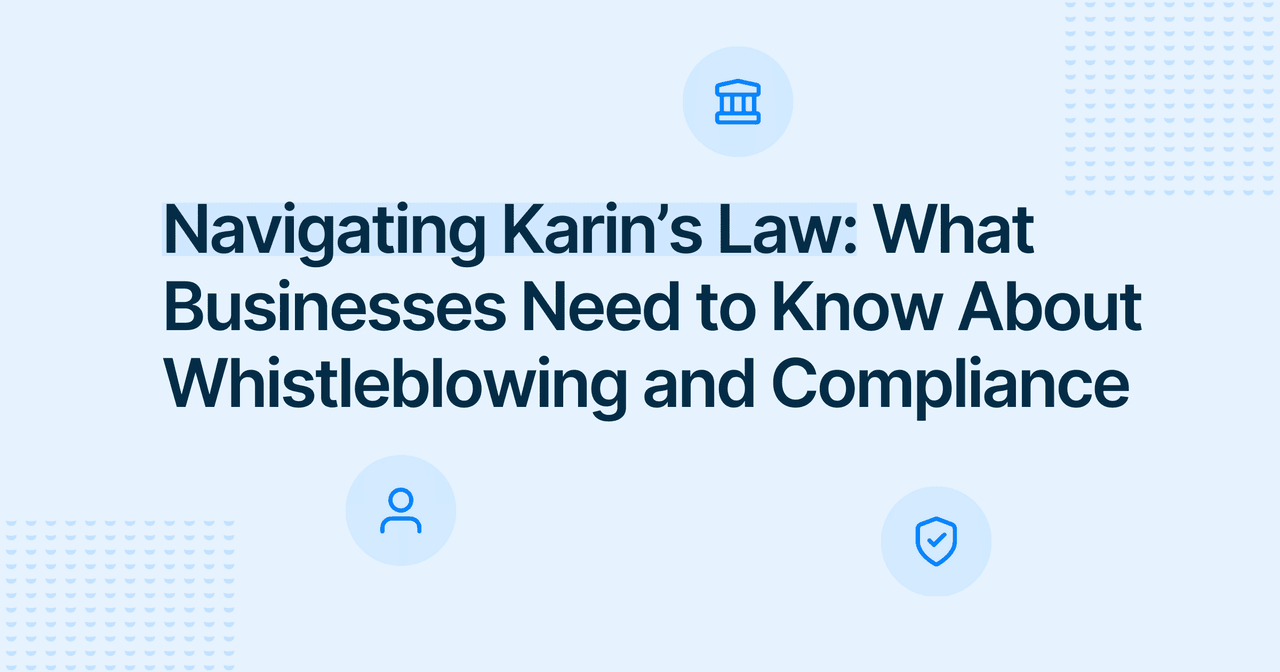



Discover the benefits of a transparent organization!
Try our free platform and strengthen the culture of openness in your team.
Workplace Environment

Yeva Bartkiv
Copywriter
Published
2025-06-19
Reading time
8 min


Table of contents
Subscribe to our newsletter
In a modern workplace, feedback isn't optional - it's essential. Yet too often, the review process is superficial, biased, or one-sided. That's why more HR leaders and people managers are turning to 360-degree feedback systems. When designed with care, anonymous 360 feedback allows for honest communication, deeper insights, and stronger leadership. But striking the right balance between transparency and discretion takes more than just sending out a survey.

This guide will walk you through how to run a 360-degree feedback process that is both anonymous and effective, helping to drive employee development, build trust, and elevate performance across the board.
360-degree feedback is a method of gathering input on an employee's performance from multiple sources: managers, peers, direct reports, and sometimes external stakeholders. Unlike traditional performance reviews which rely solely on top-down input, this approach creates a well-rounded view of performance, competencies, and behaviors.
The goal isn't just to evaluate - it's to provide actionable insights that promote growth. At its best, 360-degree feedback enhances self-awareness, strengthens teamwork, and supports leadership development.
Anonymity plays a crucial role in encouraging honest feedback. Employees are far more likely to share their real experiences and opinions when they feel safe from retaliation or awkward confrontation. That's why many organizations choose to implement anonymous 360 feedback systems.
By removing names from feedback reports, companies enable more constructive feedback strategies that get to the heart of what matters. Team members are freer to call out blind spots, praise what's working, and share ideas for improvement.
However, anonymity must be managed carefully. Without guidance, anonymous comments can veer into the vague or overly negative. So, while anonymity opens the door to candor, structure and coaching are what turn feedback into actionable feedback.
Not all feedback is created equal. Without a well-planned feedback process, even the best tools can produce poor outcomes. Common issues include:
These are more likely to occur when the feedback system lacks a clear framework. It's also important to manage expectations around how feedback will be used, and to avoid letting it exist in a vacuum. What employees want is a path forward - not just a critique.

Here are the key steps to a successful, anonymous 360-degree feedback process:
Start by identifying your goals. Is this about leadership development? Team improvement? Individual growth? Each use case requires a different approach.
Determine who will participate and how often. Some companies run 360 reviews annually as part of their performance management cycle, while others opt for targeted, real-time feedback during day-to-day initiatives or project milestones.
Invest in feedback software with the right functionality: anonymity settings, role-based input (e.g., peer feedback, self-assessments, direct reports), customizable questionnaires, and dynamic analytics. The best feedback tools make it easy to track metrics, deliver feedback, and develop an action plan.
Transparency is key. Let team members know why the feedback is being collected, how anonymity is preserved, and how it will be used. When people understand the process, they participate more thoughtfully.
Set expectations about tone and format. Remind everyone that the goal is constructive feedback and professional development - not criticism for its own sake.
A well-structured 360 degree employee evaluation survey template includes both scaled questions and open-ended prompts. Make sure it evaluates key competencies such as communication, adaptability, collaboration, and leadership skills.
Sample questions might include:
Having a consistent template makes it easier to analyze results and benchmark across roles or departments.
Once the feedback is in, look for patterns and themes - not isolated comments. Identify areas of strength and opportunities for improvement. Compare results with employee performance goals and broader performance appraisal criteria.
If your system includes a benchmark, use it to evaluate results against team or company-wide standards.
Feedback shouldn't just sit in a report. Schedule a one-on-one meeting with each employee to review results, celebrate wins, and create a personalized action plan. That plan should be measurable, realistic, and aligned with the company's employee development goals.
Great follow-up might include:
This follow-up is where real growth begins. It turns feedback into momentum.

When using anonymous 360 feedback, be sure to:
While some leaders still ask: "Is 360 feedback anonymous? Should it be anonymous?" - the short answer is: when done right, anonymity enhances feedback. It boosts employee engagement, builds transparency, and supports a culture of continuous improvement.
Employee engagement thrives in environments where people feel heard, valued, and supported. A solid 360 feedback system helps foster that kind of work environment. It shows that leadership is listening, it supports professional development, and it gives team members a voice.
By involving peers, managers, and direct reports in the review process, employees gain a clearer sense of how their work impacts others. That not only boosts employee performance, but also strengthens team cohesion and company culture.
Each participant in a 360-degree review is called a rater. Raters can include managers, team members, stakeholders, clients, and even the employee themselves through self-assessments. The diversity of voices ensures more balanced feedback.
Make sure your feedback process gives each rater enough guidance to provide thoughtful, actionable feedback. This includes setting clear expectations, offering examples, and training for fairness and consistency.
Traditional performance reviews are often seen as backward-looking. By contrast, real-time 360 feedback can address issues or celebrate wins as they happen. More frequent reviews mean less bias, more relevance, and faster course-correction.
Whether you opt for ongoing check-ins or annual reviews, consistency is key. Build your feedback culture around regular input and open dialogue.
Quantifying employee feedback can be powerful. Use metrics to track progress over time, evaluate the impact of training initiatives, or flag high-potential talent. Feedback paired with data helps HR teams make smarter, more strategic decisions.
This is also where feedback tools shine. A good platform will allow you to visualize results, compare trends, and export reports that inform your talent strategy.
Using a structured template doesn't just make your process smoother - it increases reliability. A consistent format:
Templates can be tailored to specific roles, such as 360 degree feedback for managers, new hires, or high-potential employees. Many companies also rely on a 360 degree feedback review template for annual evaluations.
A great feedback culture doesn't happen overnight. It requires consistent effort, trust, and the right tools. Begin by integrating employee surveys, feedback into team rituals, one-on-one conversations, and quarterly reviews.
Reward those who take feedback seriously and act on it. Celebrate growth. Normalize peer feedback and continuous improvement.
Over time, this culture will boost employee experience, fuel employee growth, and drive better business outcomes.
Ignoring employee feedback can have serious consequences. Low morale, rising turnover, poor employee performance, and a toxic work environment often stem from a failure to listen. When team members feel their voices go unheard, they disengage. Fear grows. Trust erodes. And eventually, high-potential talent walks out the door.
In these situations, silence isn't neutral - it's damaging. Companies that fail to act on feedback not only miss opportunities for growth, they invite dysfunction. That's why implementing a reliable, well-structured feedback system is no longer optional - it's mission-critical.
Face Up helps organizations avoid these pitfalls by providing a modern, flexible platform designed to make feedback work. With Face Up, you can:
Whether you're focused on building trust, improving leadership, or boosting employee engagement, Face Up gives you the technology and support you need to turn feedback into lasting impact.
What is 360-degree feedback?
It's a comprehensive review process where feedback is gathered from multiple sources to assess an employee's strengths and areas for development.
Is 360-degree feedback anonymous?
It can be. Many systems are designed to preserve anonymity, especially for peer feedback and direct reports.
Should 360 feedback be anonymous?
In most cases, yes - especially early on. It helps build trust and encourage more candid responses.
What's a good 360 feedback question?
Effective questions are behavior-based, like: "What's one thing this person does that helps the team succeed?"
How often should 360 feedback be collected?
It depends on your goals. Some organizations do it annually; others collect real-time input throughout the year.
Implementing anonymous 360-degree feedback isn't just a trend - it's a strategic move. When handled with care, it reveals hidden blind spots, promotes employee growth, and powers a more engaged, high-performing workforce.
By designing a structured process, using the right tools, and following through with development plans, HR leaders can transform feedback from a checkbox task into a business advantage.
The future of performance management is collaborative, transparent, and human. And it starts with feedback.
Ready to build a feedback system that drives real change? Try Face Up and see how anonymous 360 feedback and custom employee surveys can fuel your organization's growth and success.




Try our free platform and strengthen the culture of openness in your team.
Keep Reading

Alaa El-Shaarawi2025-12-197 min
Workplace Environment

Marie Roland2025-12-165 min
Whistleblowing

Alaa El-Shaarawi2025-12-087 min
Workplace Environment

Alaa El-Shaarawi2025-12-058 min
Legal & Compliance